July, 2008 | JCRC | By Yitzhak Santis
Hamas, an Arabic acronym for Islamic Resistance Movement,24 was elected to a position of leadership in the Palestinian Authority in January 2006. By December the two main Palestinian factions – Fatah and Hamas – had engaged in a seven month civil war, leaving hundreds of Palestinians dead, and many more wounded. On June 14, 2007, Hamas defeated Fatah in Gaza and took complete control of the territory, from which Israel unilaterally withdrew in August 2005.
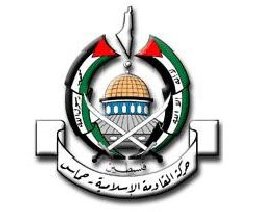
The Hamas emblem consists of the Dome of the Rock, two crossed swords, and two Palestinian flags embracing the Dome with the phrases, "There is no god but Allah", and "Muhammad is the messenger of Allah." At the top is a map encompassing the boundaries of the State of Israel, the West Bank and the Gaza Strip, with "Palestine" written under the picture and a strip at the bottom stating "Islamic Resistance Movement‐Hamas."
Hamas’ rise to power was a tremendous blow to prospects for peace between Israelis and Palestinians. In addition to Hamas’ violent record as a terrorist organization, it possesses a radical Islamist ideology that explicitly calls for the killing of Jews1, destroying the State of Israel2 and replacing Israel with a radical Islamic theocracy. This ideology is based on an underpinning of blatant anti‐Semitism3 adopted from one of Europe’s darkest periods (the Holocaust), and embedded deeply in Hamas’ ideological manifesto it calls a “Covenant.”
Since 2005, Hamas has launched thousands of rockets indiscriminately into southern Israeli towns and cities, most notably Sderot where, according to Ha’aretz, between “75 percent and 94 percent of Sderot children aged 4‐18 exhibit symptoms of post‐traumatic stress.”4 Since June 2008, Israel has entered into an Egyptian‐brokered ceasefire with Hamas.
To better understand current situation, it is important to have a fuller understanding of Hamas’ background, ideology and track record.
Radical Islamism: A Brief Background
Almost every country in the Middle East is affected by radical Islamist movements. In addition to Israel, Arab regimes throughout the Middle East are under increasing attack by radical Islamists, and Islamist violence has become endemic from the Philippines to Chechnya. Attacks against the U.S., Spain, England and other countries have increased dramatically in recent years.
The year 1979 was a watershed for radical Islamism. Although the Egyptian‐Israeli peace accord was a setback for Islamist ideology, the Islamic Revolution in Iran and the strong resistance of the Afghani mujahedeen, (among whom was Osama bin Laden) against the invading Soviet army invigorated the movement. The same year the Grand Mosque in Mecca was seized by Islamic radicals, which led to the deaths of hundreds of people, mostly pilgrims on the Hajj, in a battle with the Saudi army. Two years later Egyptian President Anwar Sadat, the first Arab leader to sign a peace treaty with Israel, was assassinated at the hands of the Takfir wa‐Hijrah – a splinter of the Muslim Brotherhood.
Hamas’ Ideology
Hamas is a branch of the Muslim Brotherhood, a militant Islamic movement founded in Egypt in 1928 by Hassan al Banna and dedicated to purging Egypt of Western influences, particularly British colonial rule. According to Prof. Ephraim Karsh, of Mediterranean and Middle Eastern Studies at King’s College, University of London, Hamas views
“the struggle for Palestine as neither an ordinary political dispute between two contending nations (Israelis and Palestinians), nor even as a struggle for national self‐determination by an indigenous population against a foreign occupier. Rather, it sees Palestine as but one battle in a worldwide holy war to prevent the fall of a part of the House of Islam to infidels.”5
In the 1960s and 70s, under the leadership of Said Qutb, the Brotherhood experienced a resurgence of popularity in Egypt, Jordan, the West Bank and Gaza Strip. The Brotherhood built
“an impressive social, religious, educational and cultural infrastructure, which gave them a political stronghold, both in the Gaza Strip and the West Bank.”6
Hamas carries out da’wah activity as part of its overall strategy to gain popular support. The military and social support wings of Hamas are inseparable, and mutually dependent.
The popular‐social base is maintained materially by the charity committees and ideologically through instruction, propaganda and incitement delivered in the mosques and other institutions and through leaflets. This base is the source for the recruitment of members into the units which engage in riots and popular violence.7
Hamas draws primarily from two ideological fonts: the universalistic Islamist principles of the Muslim Brotherhood, which endeavors to return Arab‐Islamic society back to a traditional Islamic state, and the Palestinian tenet of popular liberation coupled with the goal of establishing an Islamic state in all of Palestine.
“The Islamic Resistance Movement is one of the wings of the Muslim Brothers in Palestine.” Hamas Covenant, Article 2
Hamas: A Branch of the Muslim Brotherhood
After its founding, the Muslim Brotherhood’s popularity spread rapidly. During World War II it had actively allied itself with Nazi Germany toward the goal of ending British rule in Egypt. Also during this time the Brotherhood spread throughout the Arab world.
In 1948, after Israel’s establishment, the Brotherhood’s founder, Hassan al Banna, proclaimed that,
“Israel will exist and will continue to exist until Islam will obliterate it, just as it obliterated others before it.” (Hamas placed al Banna’s quote in their Covenant’s preamble.)
In 1966, Egyptian President Nasser executed the Brotherhood’s leadership. Eventually the Brotherhood regrouped, and today it holds 20% of the seats in Egypt’s Parliament. It boasts a very complex international financial network connecting the operations of 70 Brotherhood branches worldwide. Hamas is but one of these branches.
The movement has not changed its basic ideology in the nearly eighty years of its existence, and holds a long-term view for achieving its goal of a pan-Islamic state ruled by a Caliph.
A Portal for Anti‐Semitism
By the late 1930s, Nazi Germany, seeking to undermine the British, established contacts with the Muslim Brotherhood, which in turn saw in Germany an ally that could further their cause. Before long the Brotherhood adopted fascist trappings, including a creed of unconditional loyalty to the leader, and a paramilitary organization whose slogan “action, obedience, silence” echoed the “believe, obey, fight” motto of the Italian Fascists.8 From the Fascists al Banna also borrowed the idea of heroic death.9 Hamas’ glorification of “martyrs” dying in the act of suicide bombings echoes this fascist mode.
After al Banna’s murder in 1949, his successor Sayyid Qutb wrote a manifesto called “Our Struggle with the Jews.” The book has more than a passing similarity to Hitler’s Mein Kampf, which in German means “My Struggle” and whose main subject is the battle between “Aryans” and “the Jews.” Qutb adapted and transformed Hitler’s formulation of “the Jews” as “eternal enemies” of the “Aryan race” to “the Jews” as the “eternal enemies” of Islam. Qutb’s main theme is “the Jews” use Christianity, capitalism and communism as weapons in their war to subvert Islam, and are responsible for all sorts of evils, including Marxism, psychoanalysis, materialism, sexual depravity and the destruction of morals. For Qutb and his followers, all these imagined assemblages of incarnated evil known as “the Jews” represents a mortal, existential threat to Islam.10
Paul Berman writes,
“The revolt against liberalism (e.g. totalitarianism) that got underway after 1914 has never run out of energy, and the impulse for murder and suicide continues to rocket around the globe, and nothing from the twentieth century has come to an end.” The only difference, he explains, is the “scripts in which the revolutionary manifestos” are published: first Gothic German and Cyrillic, but now in Arabic and Farsi.”11
As the Palestinian arm of the Muslim Brotherhood, Hamas fully adapted this Judeophobic imagery in its core ideology. Its covenant states that the Jews
“have been scheming for a long time … and have accumulated huge and influential material wealth. With their money, they took control of the world media… With their money they stirred revolutions in various parts of the globe… They stood behind the French Revolution, the Communist Revolution and most of the revolutions we hear about… With their money they formed secret organizations ‐ such as the Freemasons, Rotary Clubs and the Lions ‐ which are spreading around the world, in order to destroy societies and carry out Zionist interests… They stood behind World War I … and formed the League of Nations through which they could rule the world. They were behind World War II, through which they made hugh financial gains… There is no war going on anywhere without them having their finger in it.”12
The Palestinian – Nazi Alliance
The father of Palestinian nationalism, Amin el Husseini, the Mufti of Jerusalem, was the Brotherhood’s official representative in British Mandatory Palestine. He was a close collaborator with Nazi Germany at the highest levels, including Adolf Hitler, Heinrich Himmler and Adolf Eichmann.13
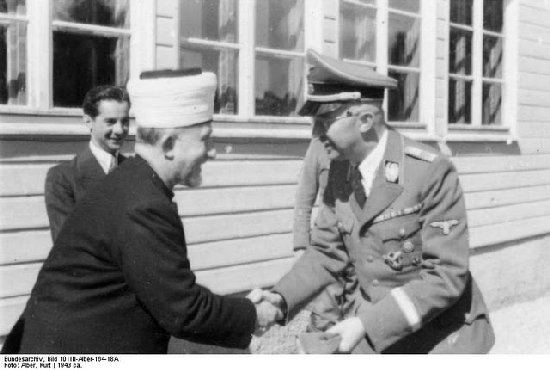
Grand Mufti Amin Al Husseini becomes close friend of Heinrich Himmler, Head of SS (Nazi Officers). Amin Al-Husseini is given a private tour of Aushwitz death camp by Himmler, where he insists on seeing first-hand the murder of Europe’s Jews. 1943, Amin Al-Husseini Visits Nazi Death Camp Aushwitz with Head of SS Heinrich Himmler. Grand Mufti of Jerusalem Amin Al Husseini had plans for construction of a concentration camp in Nablus (Palestine) to implement the “final solution” to exterminate the Jews there as an extension of Hitler’s plan in death camps like Aushwitz. The Mufti’s “hatred of Jews…was fathomless, and he gave full vent to it during his period of activity alongside the Nazis (October 1941-May 1945). His speeches on Berlin radio were anti-Semitic to the core: “Kill the Jews wherever you find them - this pleases God, history and religion. This saves your honor God is with you.”
On November 28, 1941 el Husseini met with Hitler in Berlin, where they discussed bringing the Holocaust to the Middle East. Hitler told el Husseini that once German forces defeated the British in North Africa, Hitler
“would offer the Arab world his personal assurance that the hour of liberation had struck. Thereafter, Germany’s only remaining objective in the region would be limited to the annihilation of the Jews living under British protection in Arab lands.”14
According to German historian Wolfgang G. Schwanitz:
“From 1941 to 1945, he (el Husseini) lived for the most part in Berlin as a guest of the German government. The Nazis provided office space, vehicles and money, so that the Mufti and his entire entourage could stay active. In return, the Mufti used his influence in the Middle East on the Nazis’ behalf and recruited Muslims for the Nazi war effort. On the airwaves of nazi Germany’s Arab language radio service, he called for a Holy War, a Jihad, against the allies and the Jews.”
In one such radio broadcast on November 2, 1943, Amin el Husseini declared:
“National Socialist Germany knows the Jews well and has decided to find a Final Solution for the Jewish danger which will end the evil in the world.”15
Amin el Husseini’s influence is still felt today. Hamas’ Covenant includes references to the “Protocols of the Elders of Zion.”16 (The Protocols are a forgery purporting to be the minutes of a secret meeting of international Jewish leaders plotting to take control of the world. It forms the Judeophobic basis of Nazi ideology, and has been called by historians a “warrant for genocide.”)17 Other parts of the Hamas Covenant read as if they were lifted directly from Mein Kampf.18
Hamas: Its Growth and Evolution
With the outbreak of the first Palestinian intifada in 1987, Hamas evolved into a militant organization which directed its activities not only against Israel, but also against Yassir Arafat’s Fatah, the primary group within the PLO, whose ideology is primarily nationalist and does not emphasize Islam.
During the 1990’s, Hamas emerged as a “spoiler” as it began to use suicide bombers as a means of disrupting the peace process. By the time of the “Al Aqsa” intifada in 2000, Hamas already led the way in a war of terror against Israeli civilians.
Hamas receives funding from a variety of sources: direct financial aid from Iran, donations and membership fees, fund‐raising in the Arab world and the West, from Palestinian expatriates, and private benefactors in Saudi Arabia and other Arab states.
Hamas’ Alliances: Iran, Syria, Hezbollah
“The Day of Judgment will not come about until Muslims fight Jews and kill them. Then, the Jews will hide behind rocks and trees, and the rocks and trees will cry out: ‘O Muslim, there is a Jew hiding behind me, come and kill him.'” Hamas Covenant, Article 7
Syria serves as an important base for Hamas, providing crucial infrastructure for its operational, political, military and propaganda activities. Hamas’s High Command resides in Syria and runs its operations from the Hamas’ political office, headed by Khaled Meshaal, in Damascus. This High Command is in daily contact with Hamas including its terrorist wing, Izz Al‐Din Al‐Qassam (named after a Brotherhood leader “martyred” in the Arab Revolt of 1936 in British Mandate Palestine).
The week prior to Hamas’ electoral victory in the Palestinian elections in January 2006, Meshaal met in Damascus with Iranian President Mahmoud Ahmadinejad, who has called for Israel to be “wiped off the map” and the deportation of Israeli Jews to Europe or North America, and has denied the Holocaust.
Meshaal praised Ahmadinejad for these comments. In December 2005, he met Ahmadinejad in Teheran and Al Jazeerah reported that Meshaal
“praised Mahmoud Ahmadinejad, the Iranian president, for his ‘courage’ in having dismissed the Holocaust as a myth and calling for Israel to be moved out of the Middle East to Europe or North America.”
The Lebanese terror group Hezbollah also developed a close relationship with Hamas. Shi’ite Iran is Hezbollah’s main sponsor. In 1993, Hamas became the first branch of the Sunni Muslim Brotherhood to open an official office in Teheran. In April 2001, Iran hosted an “International Conference of Support for the Intifada and the Islamic Revolution in Palestine” in Teheran, which included Hamas and Hezbollah. It is not coincidental that Hamas began using Hezbollah tactics, such as the choice of certain explosives, and mortar attacks on civilian populations.
Hamas Terrorism
“The people who carry out suicide bombings are not martyrs, they’re war criminals, and so are the people who help to plan such attacks.” Kenneth Roth, Executive Director of Human Rights Watch
Hamas is responsible for 426 terrorist attacks since 2000, primarily targeting civilians. Fifty‐eight of these attacks were suicide bombings, resulting in 377 deaths and 2,078 injuries.
Among the most heinous:
- August 9, 2001: Sbarro Pizzeria bombing in downtown Jerusalem in which fifteen people were murdered, including six children ranging in age from two to sixteen. Another 130 were maimed.
- March 5, 2003: Suicide bombing that murdered 17 people and wounded 53 in a suicide bombing of a passenger bus on en route to Haifa University. Nine of dead were children, including an Israeli Arab. Another Israeli Arab was also killed.
- August 19, 2003: Twenty‐three people were killed and over 130 wounded when a Hamas suicide bomber detonated himself on a passenger bus in Jerusalem. Five of the dead were children, including a three year old and an 11 month old.
- August 31, 2004: Sixteen people were killed and 100 wounded in two suicide bombings within minutes of each other on two Beersheba city buses. Among the dead was a 3 year old child.
During the Oslo peace process (1993 – 2000), Hamas and Palestinian Islamic Jihad carried out at least 30 suicide attacks, killing 120 Israelis, mostly civilians. These attacks were aimed at stopping or slowing the Oslo peace process, and were a major contributing factor to Oslo’s failure. Because these attacks were deliberately aimed primarily at non‐combatants with the aim of killing as many civilians as possible, the U.S. and European Union have declared Hamas a terrorist organization.
The “ceasefire” between Hamas and Israel: Implications for the future
In March 2005, Hamas agreed to a unilateral ceasefire with Israel. The ceasefire was brokered by Egypt in Cairo, where Hamas and twelve other Palestinian groups met (Israel was not invited to the talks). The Cairo Agreement, as it became known, called for a period of calm (tahdiya). Notwithstanding this “calm” Hamas continued attacking Israeli targets, including firing dozens of Qassam missiles from the Gaza Strip into Israeli towns and a number of attacks in the West Bank. Hamas leaders made it clear that this was but a “tactical” move, and they were still committed to their goal of destroying Israel. Hamas leader Mahmoud Zahar said after Israel’s Disengagement from Gaza in August 2005:
“Neither the liberation of the Gaza Strip, nor the liberation of the West Bank or even Jerusalem will suffice us. Hamas will pursue the armed struggle until the liberation of all our lands. We don’t recognize the state of Israel or its right to hold onto one inch of Palestine. Palestine is an Islamic land belonging to all the Muslims.”19
The 2005 “ceasefire” fell apart when Islamic Jihad and other Islamist groups that were not parties to the ceasefire continued their rocket attacks on Israel, and Israel responded militarily to try to stop the attacks.
Since then, thousands of rockets were fired into Israel by Hamas and other groups. As this document goes to press, Egypt succeeded in brokering another “tahdiya” between Israel and Hamas. Middle East observers hold various opinions on why Hamas negotiated this ceasefire. Some say they did it out of weakness, others say it was from a position of strength.
The tahdiya calls for a halt in all Gaza‐Israel violence for six months in exchange for Israel’s easing its blockade of Gaza, allowing in more vital supplies to enter Gaza. Talks are supposed to begin on opening the Rafah crossing between Gaza and Egypt, and for an exchange of prisoners including Israeli soldier Gilad Shalit, held for two years by Hamas.
The “position of weakness” analysis:
Retired Israeli General Amnon Lipkin‐Shahak argues that:
Some say the organization is gaining power, but the agreed‐to ceasefire may be out of weakness rather than strength. Hamas promised its people that it would gain independence through violence, but that policy has led to only misery. Since its takeover of Gaza, the organization has replaced Fatah in terms of corruption. Hamas members and officers are the only people with gas in their vehicles; they have the best jobs, and seem to be doing fine while the rest of the population struggles. Although it has made improvements in terms of law and order, Hamas does not offer much to the people. Considering these facts, it is debatable whether it has gained support since the election.
The “position of strength” analysis:
Khaled Meshaal, head of Hamas’ Political Bureau, told Al Jazeera that it “is not unusual for the resistance…to escalate sometimes and to retreat a bit sometimes… The tahdiya creates a formulation that will force Israel…to remove the siege…and if it happens it will be a remarkable achievement.”20
While this explanation may be “spin” for domestic consumption, this does not diminish the group’s ideological foundations. For Hamas, this tahdiya is not a ceasefire nor a truce, but a “temporary” cessation of hostilities that does not commit it to anything beyond six months. Hamas can use any pre‐text to renew rocket attacks, and it can “outsource” its “work” by having other Palestinian groups attack Israelis.
The tahdiya also gives Hamas an opening to boost its military build‐up for the next round of violence against Israel. Following Hezbollah’s strategy, Hamas is seeking to acquire longer‐range and more destructive missiles to be used against Israeli civilian targets. Already, Hamas has fired Iranian‐made Grad missiles into Ashkelon.
Politically, according to Jonathan D. Halevi, former advisor to the Policy Planning Division of Israel’s Foreign Ministry:
“Another diplomatic consequence of the tahdiya will be increasing pressure on Israel to accept a reconciliation agreement between Hamas and Fatah in the future. That could lead to increasing demands on Israel to negotiate a permanent status arrangement with the joint Hamas‐Fatah government, while Hamas remains committed to its political program for the elimination of Israel.21
Is Hamas moderating its position?
Over its entire existence to the present, Hamas spokespeople have not changed their anti‐Israel message. For instance, Khaled Meshaal, speaking on Al Jazeera on January 29, 2008 said:
“We will not withdraw from our fundamental principles, from our rights and our strategic goals. The map of Palestine, for any Hamas member… is the well‐known Palestinian map… As for recognizing [Israel] and amending our charter, Hamas is not the kind of movement that succumbs to pressure.”
Meshaal asserts Hamas’ commitment to its core ideology, what he calls their “fundamental principles. His reference to the map of Palestine “well known” to “any Hamas member” is clear: Hamas’ Covenant defines exactly the parameters of the map, as being “every inch of Palestine.”
‘The Islamic Resistance Movement is a distinguished Palestinian movement, whose allegiance is to Allah, and whose way of life is Islam. It strives to raise the banner of Allah over every inch of Palestine.’ Hamas Covenant, Article 6
And recently, answering a reporter’s who asked, “What is your vision of a final, long‐term settlement?” a senior Hamas leader in Gaza said,
“I can quote (assassinated Hamas leader) Sheikh Yassin: Hamas rules out recognizing Israel.”22
Even many Palestinians have serious doubts that Hamas will change. Prior to the 2006 elections, one Fatah official said:
“Hamas is trying to replace the PA. Since 1988 their goal has been to replace the PLO. The strategy remains the same but the tactics are different. It’s the Muslim Brotherhood strategy of infiltration.”23
Hamas’ long‐term strategic goal remains, as always, Israel’s destruction. The current tahdiya is but a tactical move in this long‐term strategy, which Hamas expects to take generations to accomplish. Its core ideology remains permeated with anti‐Semitism. Hamas is allies with the most anti‐Semitic regime today, Mahmoud Ahmadinejad’s Iran, and its own ideology is woven through and through with a deeply antisemitic worldview. As such, a final, lasting and comprehensive peace is made all the more impossible so long as Hamas remains a major force in Palestinian politics.
You can download a copy of the “Hamas Covenant“, here.
You can download a copy of the “Protocols of the Learned Elders of Zion“, here.
You can download a copy of this article as pdf, here.
Notes:
1 “The Day of Judgment will not come about until Muslims fight Jews and kill them. Then, the Jews will hide behind rocks and trees, and the rocks and trees will cry out: “O Muslim, there is a Jew hiding behind me, come and kill him.’” Hamas Charter, Article 7.
2 “Israel will exist and will continue to exist until Islam will obliterate it, just as it obliterated others before it.” Hamas Charter, Preamble.
3 See Appendix B.
4 “Study: Most Sderot kids exhibit post‐traumatic stress symptoms,” Ha’aretz, January 17, 2008.
5 Jerusalem Issue Brief, Vol. 7, No. 37, 30 April 2008 (Institute for Contemporary Affairs at the Jerusalem Center for Public Affairs with the Wechsler Family Foundation).
6 The Institute for Counter‐Terrorism at the Interdisciplinary Center, Herzliya, Israel. Background Report on Hamas.
7 Ibid.
8 “Terror, Islam and Democracy,” Ladan Boroumand and Roya Boroumand, Journal of Democracy, Volume 13, number 2, April 2002.
9 Ibid.
10 See Muslim Anti‐Semitism: A Clear and Present Danger, by Robert S. Wistrich, American Jewish Committee, April 2002.
11 “Terror and Liberalism,” by Paul Berman, W. W. Norton & Company, 2004.
12 Hamas Covenant, Article 22.
13 See “Icon of Evil: Hitlerʹs Mufti and the Rise of Radical Islam,” by David G. Dalin and John F. Rothmann, Random House, 2008 and “Jihad and Jew‐Hatred: Islamism, Nazism and the Roots of 9/11,” by Matthias Kuntzel, Telos Press Publishing, 2007.
14 From notes taken by Dr. Paul Otto Schmidt as quoted in Gerald Flemingʹs Hitler and the Final Solution, p. 101‐104, University of California Press (1988). Also Geheime Reichssache 57 a/41, Records Dept. Foreign and Commonwealth Office Pa/2.
15 Text of Amin el‐Hussein’s speech of 2 November, 1943, National Archives, Washington, D.C. T60/2576066‐9.
16 See Hamas Covenant Article 32: “Zionist scheming has no end, and after Palestine, they will covet expansion from the Nile to the Euphrates River. When they have finished digesting the area on which they have laid their hand, they will look forward to more expansion. Their scheme has been laid out in the ‘Protocols of the Elders of Zion.’”
17 See “Warrant for Genocide: The Myth of the Jewish World Conspiracy and the Protocols of the Elders of Zion,” Norman Cohn, Serif Publishing; New edition March 1, 1996, and ʺAntisemitism: Protocols of the Elders of Zionʺ, the United States Holocaust Memorial Museum at ushmm.org.
18 See Hamas Covenant Article 22: ʺThe enemies have been scheming for a long time … and have accumulated huge and influential material wealth. With their money, they took control of the world media… With their money they stirred revolutions in various parts of the globe… They stood behind the French Revolution, the Communist Revolution and most of the revolutions we hear about… With their money they formed secret organizations ‐ such as the Freemasons, Rotary Clubs and the Lions ‐ which are spreading around the world, in order to destroy societies and carry out Zionist interests… They stood behind World War I … and formed the League of Nations through which they could rule the world. They were behind World War II, through which they made huge financial gains… There is no war going on anywhere without them having their finger in it.ʺ
19 Asharq Al‐Awsat, August 18, 2005.
20 Al Jazeera April 26, 2008.
21 “The Hamas Interest in the Tahdiya (Temporary Truce) with Israel,” Jerusalem Center for Public Affairs, Vol. 8, No. 4, 19 June 2008.
22 Reuters, February 17, 2008.
23 Cited in Enter Hamas: The Challenges of Political Integration, Middle East Report N°49 – 18 January 2006, International Crisis Group Conflict Prevention Partnership, European Union.
24 The Islamic Resistance Movement, Al-Harakah Al-Muqawama Al-Islamiya –commonly know as Hamas- was officially founded by Sheikh Ahmed Yassin, Abdel Aziz al-Rantissi and Mohammad Taha of the Palestinian wing of Egypt’s Muslim Brotherhood, on December 14th of 1987, though its beginnings can be traced further back than that date.
JCRC is a beneficiary of the
- Jewish Community Federation of San Francisco, the Peninsula, Marin and Sonoma Counties,
- Jewish Community Federation of the Greater East Bay.
Yitzhak Santis is Director of the JCRC Middle East Project.



 RSS
RSS


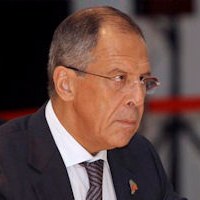
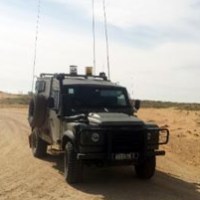

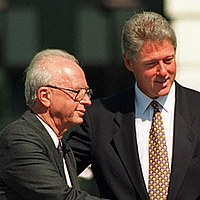




Hamas: Its Nazi Ideology and Record #israel #jcot #hamas #nazi #IHH #gaza #flotilla http://j.mp/dBDhqG
Hamas: Its Nazi Ideology and Record #israel #jcot #hamas #nazi #IHH #gaza #flotilla http://j.mp/dBDhqG
Hamas: Its Nazi Ideology and Record #israel #jcot #hamas #nazi #IHH #gaza #flotilla http://j.mp/dBDhqG http://ff.im/lzzrN
[…] This post was mentioned on Twitter by Nedrealist, Nedrealist. Nedrealist said: Hamas: Its Nazi Ideology and Record #israel #jcot #hamas #nazi #IHH #gaza #flotilla http://j.mp/dBDhqG […]
Hamas: Its Nazi Ideology and Record #israel #jcot #hamas #nazi #IHH #gaza #flotilla http://j.mp/dBDhqG
[…] See more here: Hamas: Its Nazi Ideology and Record | Middle East Affairs … […]
RT @CrethiPlethi: Hamas: Its Nazi Ideology and Record #israel #jcot #hamas #nazi #IHH #gaza #flotilla http://j.mp/dBDhqG
@Ban_Bon Don't see the point u r making. Hamas is an Arabic Nazi party: http://bit.ly/eCpw5c U saying Sudani president is a Nazi?
RT @Majnoon4: @Ban_Bon Don't see the point u r making. Hamas is an Arabic Nazi party: http://bit.ly/eCpw5c U saying Sudani president is …
@Ban_Bon Hamas is an Arabic Nazi party: http://bit.ly/eCpw5c They also traffic drugs/women.
@wikileaks Hamas is an Arabic Nazi party committed to the genocide of the Jewish state http://bit.ly/eCpw5c